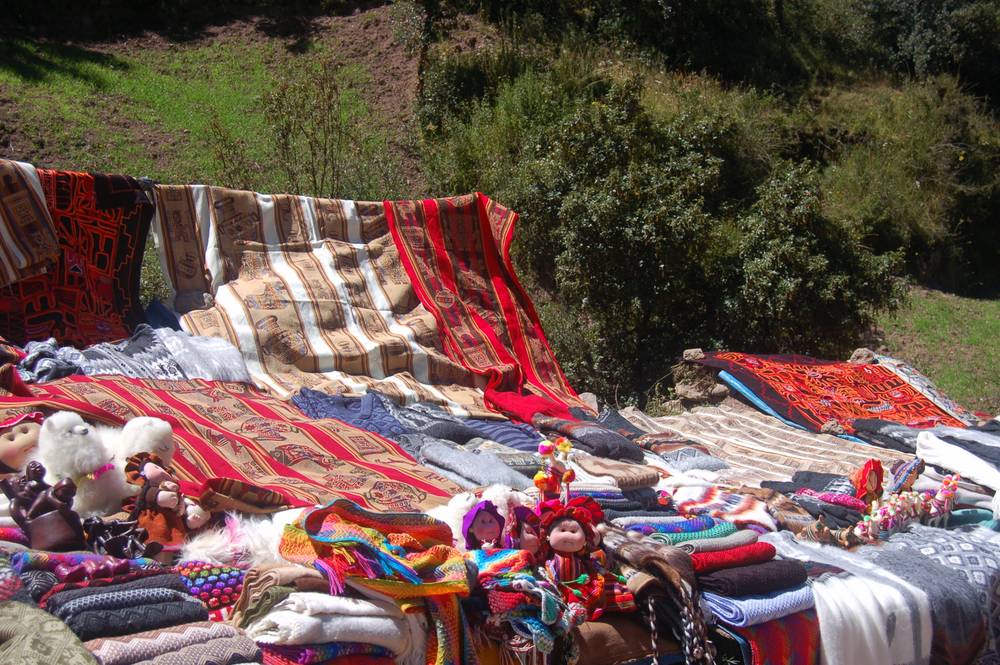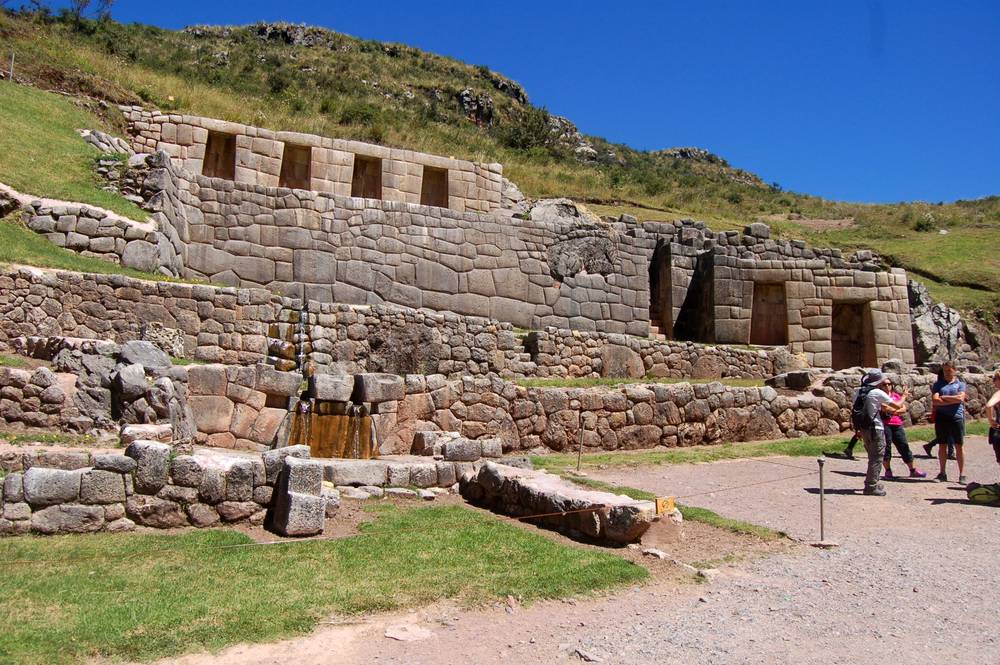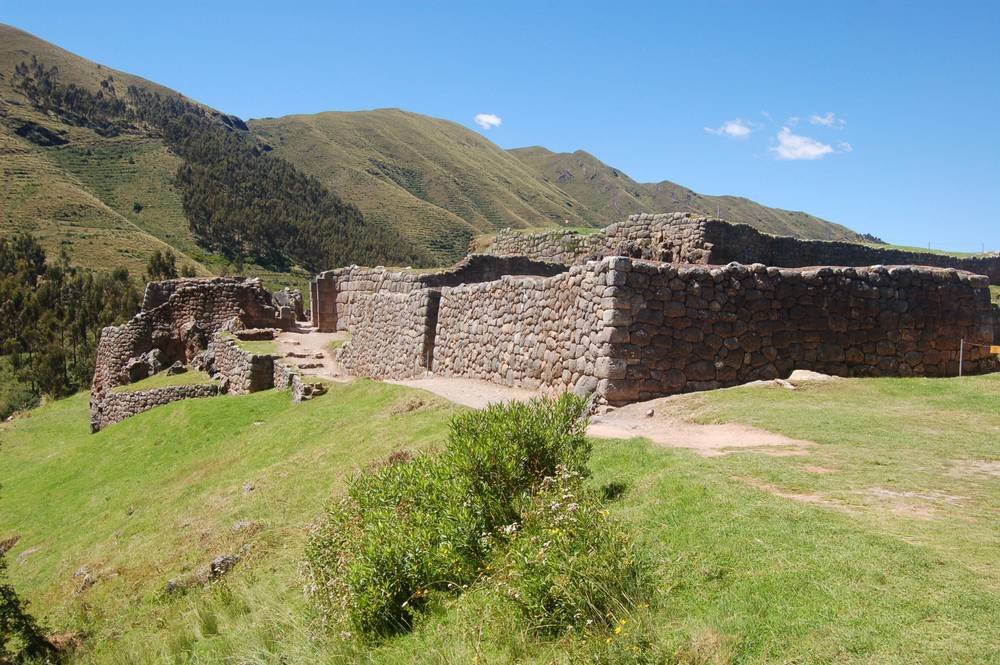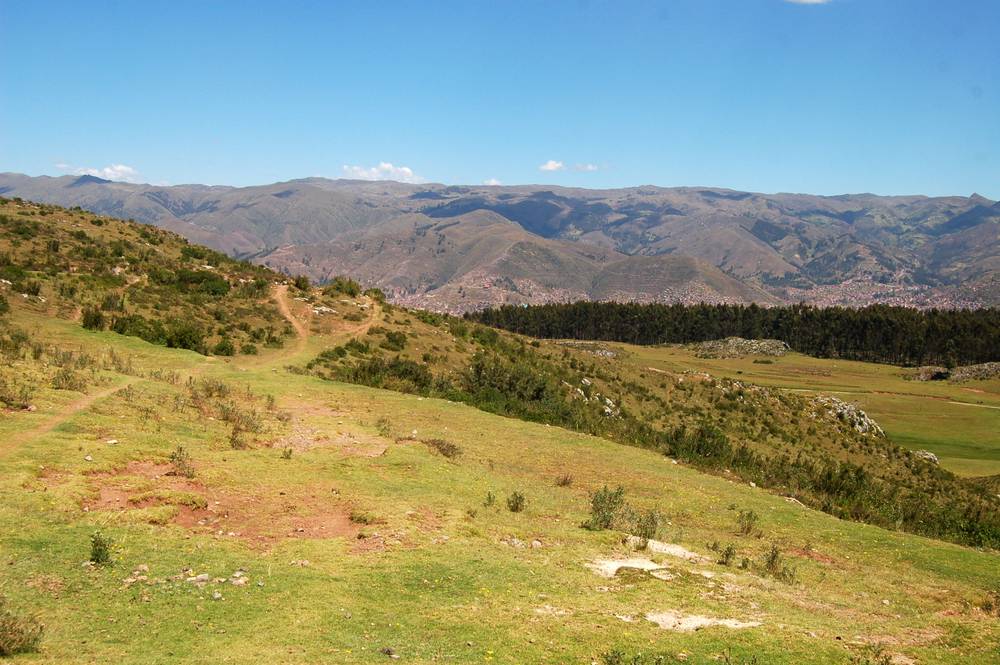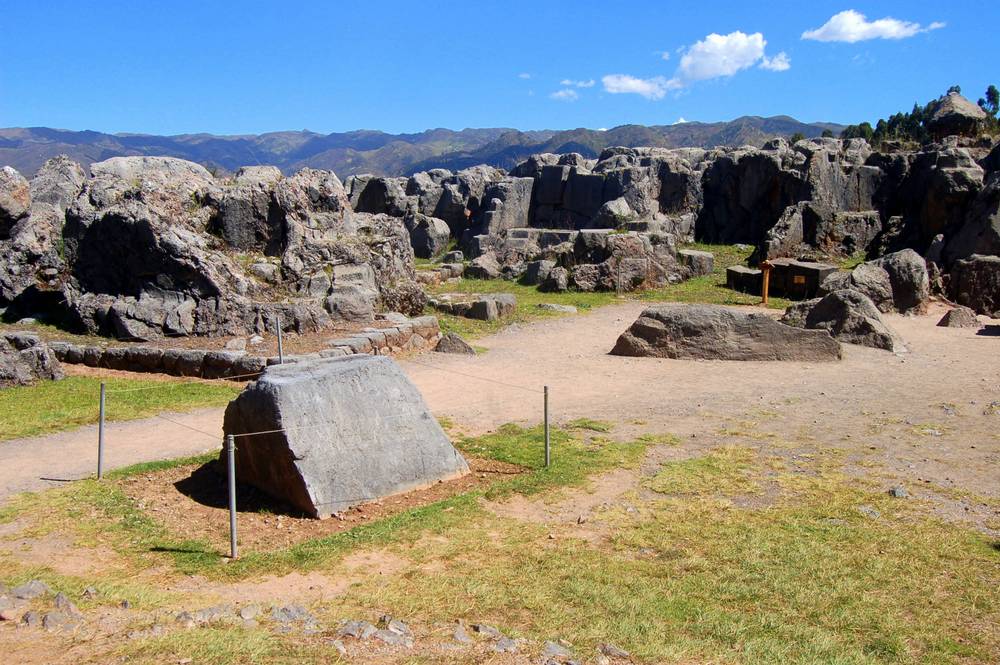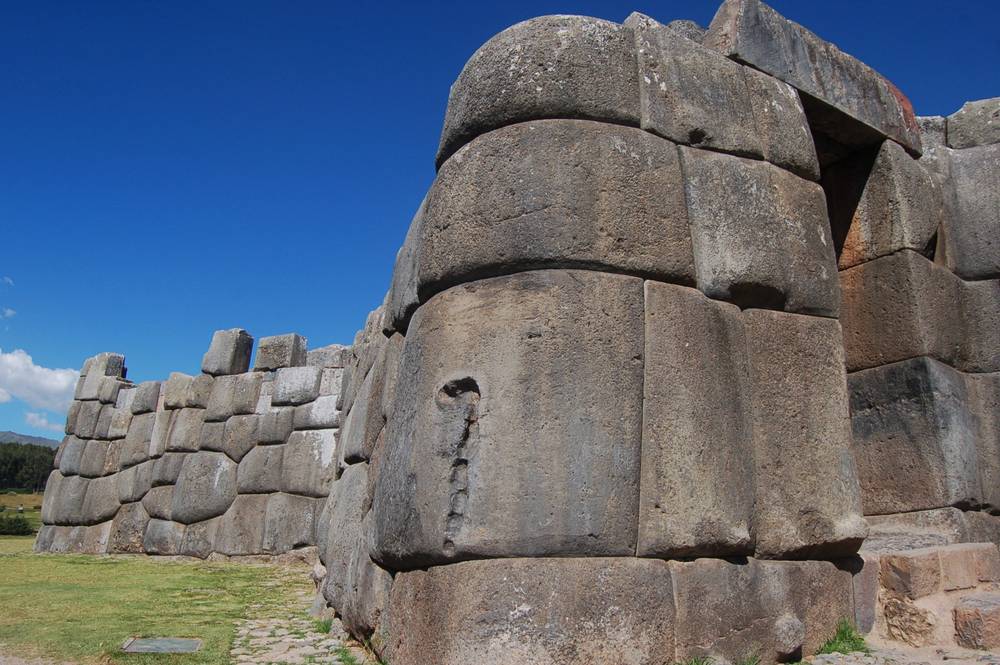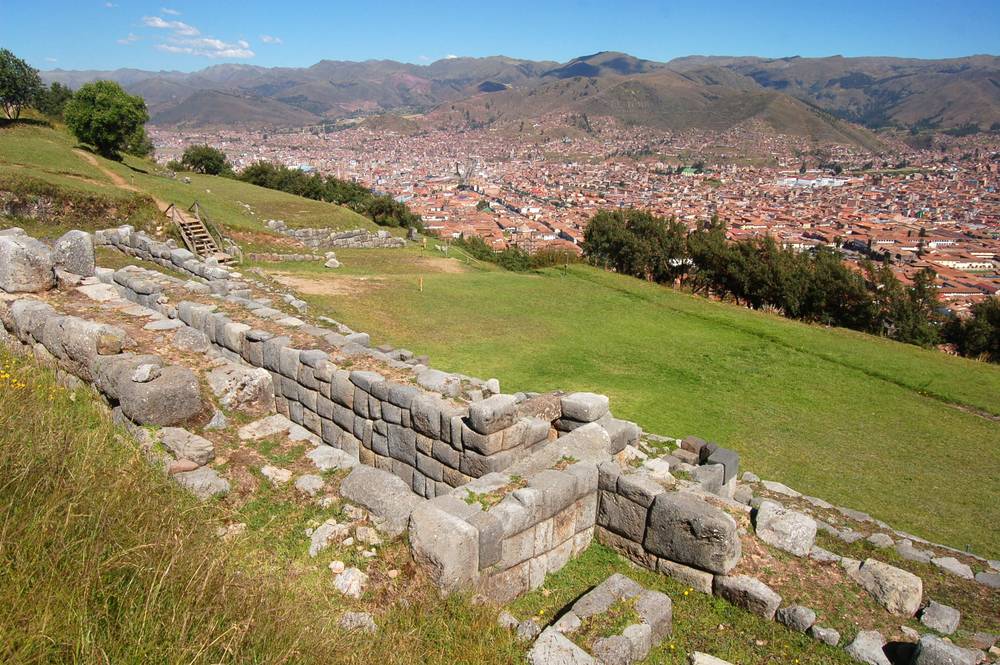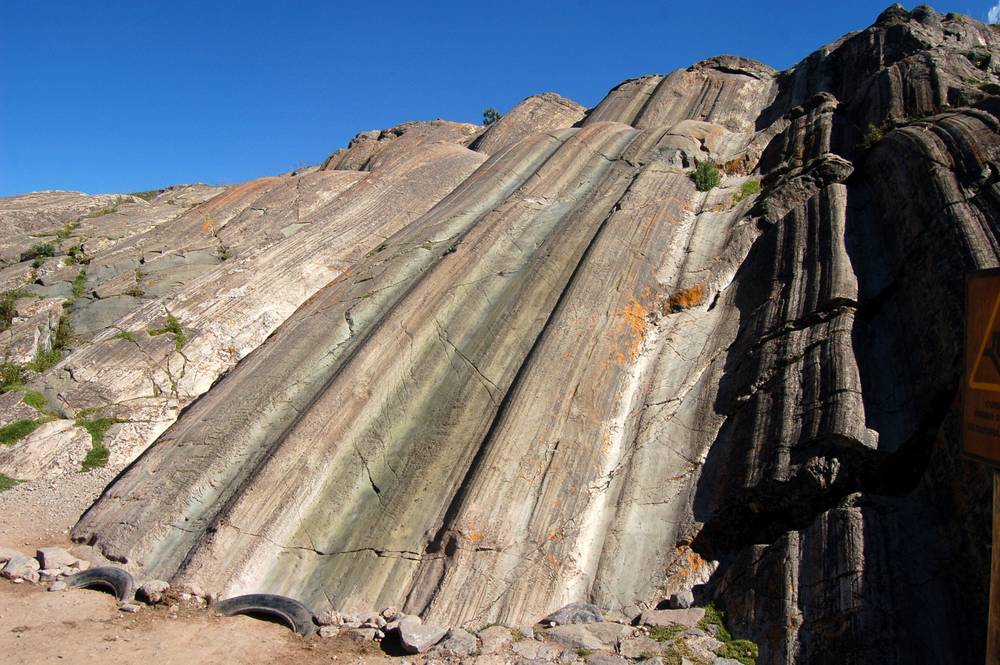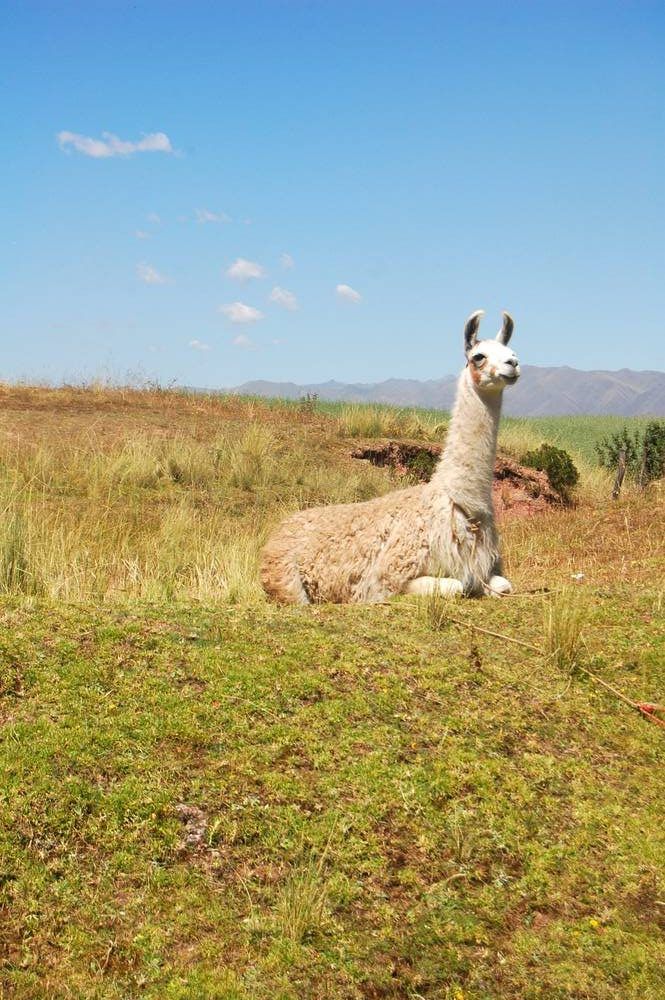Saqsaywaman, Qenqo, Pukapukara, and Tambomachay – oh my.
Cusco, Peru is best known as the gateway to Machu Picchu, that seemingly exotic and horrendously overpriced destination I’ll probably never visit. This is One Weird Globe, however, which means I’m here to give you a less-touristy alternative that’s at least as awesome.
That alternative has no clear name, so let’s make an obvious one up: the one-day Cusco Archeological Tour. It’s a trip that will take a few hours at minimum and a full day at most, allowing you ample time to meander through the more touristy parts of Cusco or retire to the cervesas of your choice.
Your first stop can be a ticket office, if you like – the main office is in the touristy center, but can only sell you a boleto parcial (literally, partial ticket) for today. It’s only for tour groups that they’re able to rotate the dial on their date-stamper, apparently. If you’re staying in the central part of Cusco, head to the Municipaidad del Cusco at Avenida El Sol 103, which is about a block from the Plaza de Armas. Otherwise, head to the first destination below and you can get your ticket there – it’s the same inflated-for-tourists price either way, 70 soles.
Tambomachay
If you’re gung-ho about hiking, you’re going to love the views along this countryside road. It’s uphill from Cusco to each of the four stops, however, so it’s far easier to ride a bus or minivan up, then walk downhill and back into town. Start from the Estacion de Buses Urubamaba y Calca (GPS: -13.519018, -71.967380) at the corner of Puputi and Juan Santos and take any bus or minivan towards Pisac / Calca / Urubamba (the minivans will cost more, perhaps 2.50-3 soles vs. a bus fare of around 1 sole, but tend to leave as soon as they’re full).
Jump off the bus at Tambomachay – it’ll be just before a large curve to the right. Get (or show) your ticket, then head uphill past the crafts you saw in the first picture, and to the remains here at Tambomachay (what you saw in the picture above).
It’s worth noting that there’s very little or zero signage at these stops, but conveniently had an ample selection of private tour guides – I was having flashbacks to the Museum of Egyptian Antiquities in Cairo, which managed to have the same ‘issue’. Walk an easy-enough uphill for about 10 minutes to reach the summit.
Tambomachay was a famous resting place of the Incas, and also served as a drinking hotspot and part of Cusco’s defensive system. Look for the aqueducts, canals, and waterfalls, not all of which may be perfectly visible from the tourists standing area.
Puca Pucara / Puka Pukara
Just down from and across the main road is a site you saw on your way up is Puca Pucara (AKA Puka Pukara or Pukapukara), the second stop exposes a serious design flaw – by following the obvious gravel path from Tambomachay to Puca Pucara, you’ll quite easily bypass the ticket booth and souvenir layouts. A less scrupulous person might discover this as the free way into the site, though you’ll note that getting into Tambomachay has an obvious entrance and is otherwise gated / fenced as you’d expect.
Just some of the views along the way while at Puca Pucara. Literally ‘red fortress’, Puca Pucara is on the high ground and would have been an ideal place to see anyone approaching. The walls are functional, but don’t have the same aesthetics as other sites, which suggests a hasty construction. A single sign by the entrance has a bit more, along with some rather hilarious Spanglish.
Exit by the entrance and souvenir setups, then jump on any bus heading down the hill or settle in for a several kilometer walk.
Q’Enqo / Qenqo
It’s here where you might be wondering just what the designers were smoking when they were putting this place together for tourists. Just like at Puca Pucara, you can quite easily see most of the site without ever needing to show a ticket. The actual proper entrance is much closer to the exit, and from the road you can all too easily walk down a dirt trail and never approach the ‘control’ booth. Look for a large stone where sacrifices were supposedly made as one of the few pieces protected by wire – walk through, then double back to go under the rock.
Q’enqo is one of the largest wak’as, or holy places, in the Cusco region. Supposedly, sacrifices and mummifications happened here, but again there’s precious little info on the site. A single sign near the proper entrance was all we saw, so if you’re serious about taking in these sites, it’s worth bringing your own reading material.
From Q’enqo / Qenqo, you can hop back on the next passing bus or walk it to your final stop, Saqsaywaman.
Saqsaywaman / Saqsayhuaman
Yes, the name sounds like ‘sexy woman’ when spoken correctly. Assuming you’re not 12, we can skip the chuckles and enjoy the highlight of this quartet.
While Saqsaywaman / Saqsayhuaman is easily seen from the road, you’ll find this is the only site where tickets may actually be checked. As this is both the largest and closest of the four to the city of Cusco, it draws the most tourists (who often discover the cheapest ticket available to them is the aforementioned boleto parcial). It’s arguably the best of the four sites, however, and larger than the other three combined.
Added to the UNESCO World Heritage along with Cusco in 1983, this citadel / fortification was first occupied in the early 10th century, constructed in the early 12th century by the Killke culture, and expanded by the Incas in the 13th century. There’s room at the bottom there for thousands of onlookers, presumably at some sort of ceremonial event. You’ll also note the masonry is precise – so much so that sticking something between the rocks might be difficult or virtually impossible. Spanish forces took some of the smaller stones to build their city after their siege on Cusco. The largest stones weigh almost 200 tons, and it’s thanks to their weight that they’re still there today.
One of the best parts of the site is the rodadero (rock slide) a chance to slide down one of several relatively smooth paths. Be aware that you’ll hurt your hands if you try to use them to slow you down – the main parts where your butt will slide are smooth enough, but the sides aren’t.
Even though it’s the most popular site, the size is such that you won’t see too many of your fellow tourists.
In short, the longer we walked this trail, the better it got.
A random llama along the way, anyone?
Three quick pro-tips:
- Feel free to negotiate with would-be tour guides or simply walk past them to hear their second offer. When we entered Saqsaywaman / Saqsayhuaman, a tour guide started by asking for 50 soles before dropping to 10 (?!). These guides will be for a single site only, by the way.
- If you’re looking to play this the… cheeky… way, two of the four places (Puca Pucara / Puka Pukara and Q’Enqo / Qenqo) are so poorly designed that you can easily enter without needing a ticket, and I’m reasonably convinced they’re not too worried about issues. Tambomachay and Saqsaywaman / Saqsayhuaman are better designed.
- Bring plenty of water, doubly so if you’re hiking between stops. It’s several kilometers along a beautiful countryside road, but there’s only a few places selling anything in between stops.
Name: The one-day Cusco Archeological Tour
Address: Along the 28G highway, northern Cusco, Peru (GPS: -13.509833, -71.981681)
Directions: Start from the Estacion de Buses Urubamaba y Calca (GPS: -13.519018, -71.967380) at the corner of Puputi and Juan Santos and take any bus or minivan towards Pisac / Calca / Urubamba (the minivans will cost more, perhaps 2.50-3 soles vs. a bus fare of around 1 sole, but tend to leave as soon as they’re full).
Hours: 7:00am-5:30pm, open daily
Admission: 70 Peruvian soles (a single-day ticket allows you access to all four sites)
Phone: none
Website: http://www.drc-cusco.gob.pe/index.php/saqsaywaman
Ratings out of 5 globes (How do I rate destinations?)
Ease to arrive:
Foreigner-friendly:
Convenience facilities:
Worth the visit:
Like this post? Like the Facebook page!

